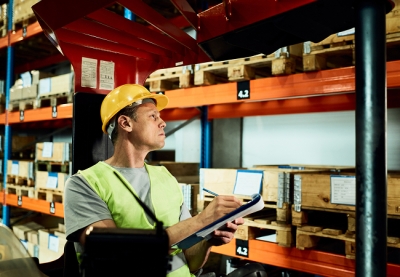If your business builds, manufactures, or runs critical infrastructure, logistics isn’t a back-office task; it’s the bloodstream. Whether you’re moving heavy equipment between suppliers, staging gear for a new facility, or bringing a live environment online without a minute of downtime, the details matter.
Below is a no-nonsense look at industrial and mission-critical logistics, where they overlap, and how to execute with less risk and more predictability.
First, some quick definitions
Industrial logistics coordinates the flow of materials, parts, and equipment across suppliers, plants, and job sites. It covers transport (including oversized/heavy haul), secure storage, inventory control, supplier integration, and light assembly/staging to keep production schedules intact. The goal: efficient, disruption-free supply chains.
Mission-critical logistics applies those same muscles in environments that cannot go down—think data centers, telecom hubs, emergency operations, SCIFs (Sensitive Compartmented Information Facilities), high-performance computing labs, and hospitals. The standard here is redundancy, resilience, and 24/7/365 reliability, often delivered by a single partner who can combine construction logistics, heavy haul/rigging, secure warehousing, and IT asset lifecycle management under one roof.
What “good” looks like (in plain English)
- One accountable partner. A single point of ownership reduces hand-offs and errors. For mission-critical projects, this also means coordinated after-hours/staged deliveries, so operations never pause.
- Heavy haul + vendor-managed rigging. Oversized/sensitive equipment needs the right trailers, permits, and certified rigging crews—managed end-to-end, not “piecemealed.”
- Secure warehousing and staging. Use monitored, climate-controlled facilities with a chain of custody to protect high-value gear and prevent mold or environmental damage; stage by work package to accelerate installs.
- IT asset lifecycle control. From intake to deployment to retirement, you want complete visibility and compliance—especially for data-center and regulated environments.
- Project management with real teeth. One PM, clear milestones, site walkthroughs, delivery sequencing, and transparent communications to avoid any “surprises” in the job.
Practical steps you can use this quarter
Lock your logistics plan to the build sequence.
Map deliveries to construction milestones and rack-ready dates. Stage gear in lots that align to weekly sprints (e.g., “Row A Power/Row A Cooling/Row A Racks”). Your PM should own this calendar and coordinate after-hours drops to avoid congestion or downtime.
Treat chain-of-custody like a KPI.
For high-value equipment or IT assets, insist on custody logs from pickup to installation—with controlled storage and monitored access. This reduces loss, speeds audits, and simplifies warranty issues later.
Pre-assemble and kit when it saves time.
Light assembly, crating, and pre-kitting at the warehouse compresses on-site time and cuts rework. It’s especially helpful on industrial jobs with repeatable modules or packaged systems.
Engineer for uptime (even during construction).
Use staged cutovers and “live-environment” plans. For truly critical sites, design to N+1 or better for power/cooling, and sequence work so the existing system stays online while capacity grows.
Right-size your rigging plan early.
Certified riggers, crane picks, load paths, slab ratings—get it all engineered before equipment ships. Your logistics partner should manage vendors, permitting, and safety briefings, then own the day-of execution.
Keep a buffer in storage.
Maintain a small on-hand buffer of critical SKUs (power components, patch gear, fast-movers) in secure warehousing so a single short item doesn’t stall a whole sprint. Climate control protects sensitive gear from corrosion and mold.
Close the loop on IT assets.
Inventory from receipt to rack; track serials/MACs; document installs; and set your end-of-life policy now (wipe, recycle, remarket). Complete lifecycle management reduces risk and surprises at refresh.
Common pitfalls (and how to dodge them)
- Too many vendors. More hand-offs = more risk. Consolidate to one accountable partner for transport, warehousing, rigging, and IT handling, and then measure them against schedule and uptime.
- “Ship it whenever” mentality. Unsequenced deliveries clog sites and create damage. Use work-package staging with just-in-time drops aligned to install crews.
- Underestimating live-site complexity. In mission-critical spaces, the build must respect uptime. Plan for after-hours, isolation zones, and stepwise cutovers.
- Ignoring environmental risks. Sensitive equipment + non-conditioned storage = trouble. Climate control and monitored facilities are non-negotiable.
Where this matters most
Mission-critical logistics isn’t just “for data centers.” Government/defense, healthcare and life-sciences, financial trading floors, and research labs all require continuous operation and specialized handling—each with its own compliance and safety needs.
How to evaluate a partner (a quick checklist)
- Single-partner model with true end-to-end services (heavy haul, rigging, secure warehousing/staging, IT lifecycle).
- Documented chain-of-custody and secure, climate-controlled storage.
- Proven experience delivering in live environments with after-hours/staged strategies.
- Dedicated PMs who handle supplier integration, site walks, and delivery orchestration.
- Regional expertise where it counts (e.g., Data Center Alley / Mid-Atlantic).
When logistics is done right, crews show up to clean sites, the exact components they need are staged and scanned, equipment drops in with zero drama, and your go-live happens on time, with no outages.



